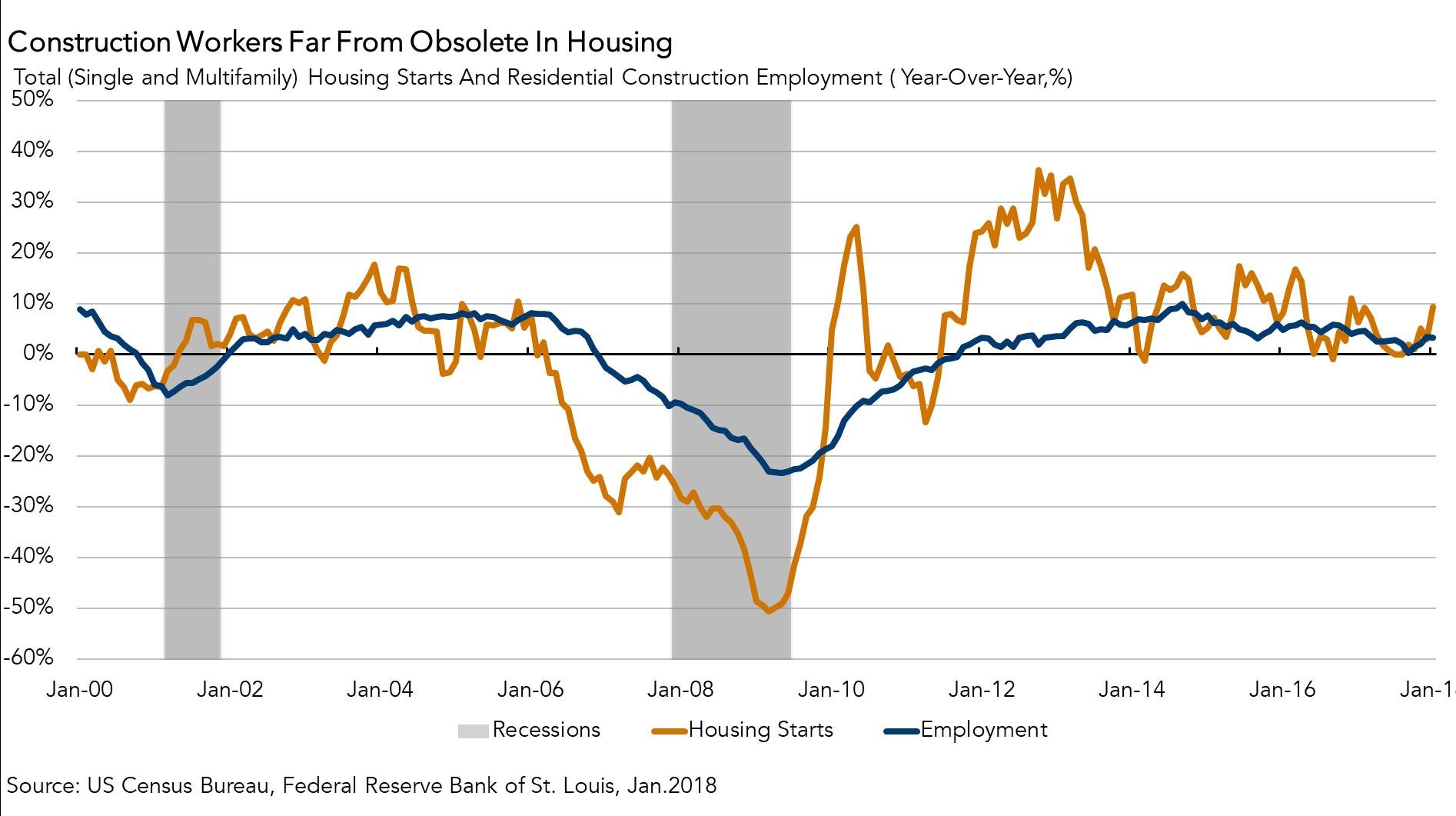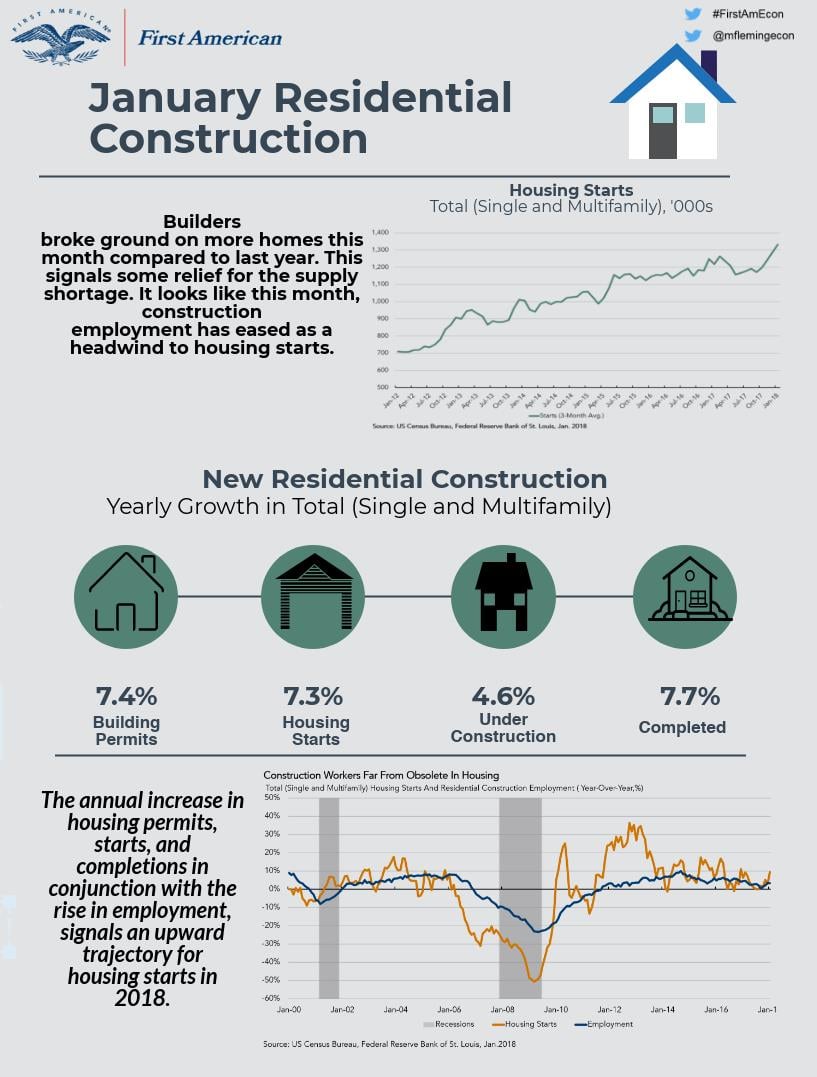As we analyze yesterday’s housing starts data, it’s important to also consider the impact of construction labor on the velocity of new home construction. The employment situation report, released earlier this month, reported an increase of 5,000 residential construction jobs between December 2017 and January 2018. The number of residential construction jobs is now 1.3 percent higher than a year ago. The growth in residential construction jobs supports further improvement in the pace of home building because building a home does not readily lend itself to outsourcing and automation.
"The annual increase in housing permits, starts and completions, in conjunction with the rise in employment, signals an upward trajectory for housing starts in 2018."
Builders broke ground on more homes in January 2018 compared with January 2017. Housing completions, the number of net new homes added to the housing stock, also increased dramatically compared with a year ago. This signals some relief for the supply shortage. The rise in permits, the leading indicator of housing starts, in conjunction with the rise in construction employment this month, signals an upward trajectory for housing starts in 2018. Based on the data this month, construction employment has eased as a headwind to housing starts. Now that’s a great (housing) start to 2018!

While the news this month is very good, we have yet to reach a pace of construction sufficient to keep up with demand. Housing starts are an important source of future supply, and as we have previously discussed in our Real House Price Index (RHPI), the housing market is facing a supply constraint problem. As housing starts have increased, so have the number of housing units completed. This month, housing units completed are up 7.7 percent compared with a year ago.
The annual amount of completions necessary to keep pace with growing millennial demand is estimated to be 1.5 million units (the historical average for housing starts). This month’s completions are a modest step toward producing enough housing to meet market demand.

What Insight Does Monthly Housing Start Data Provide?
Housing starts data reports the number of housing units on which construction has been started in the month reported, providing a gauge of future real estate supply levels. The source of monthly housing starts data is the “New Residential Construction Report” issued by the U.S. Census Bureau jointly with the U.S. Department of Housing and Urban Development (HUD). The data is derived from surveys of homebuilders nationwide, and three metrics are provided: building permits, housing starts and housing completions. Building permits are a leading indicator of housing starts and completions, providing insight into the housing market and overall economic activity in upcoming months. Housing starts reflect the commitment of home builders to new construction, as home builders usually don't start building a house unless they are confident it will sell upon completion. Changes in the pace of housing starts tells us a lot about the future supply of homes available in the housing market. In addition, increase in housing starts can lead to increases in construction employment, which benefits the overall economy. Once the home is completed and sold, it generates revenue for the home builder and other related industries, and is added to the housing stock.
